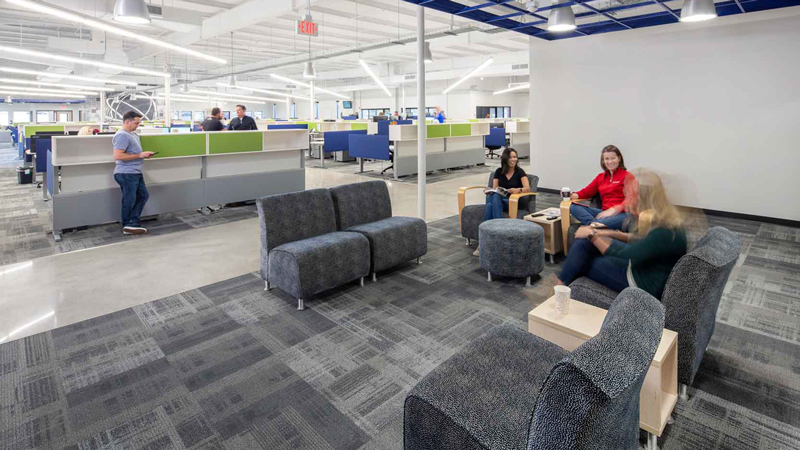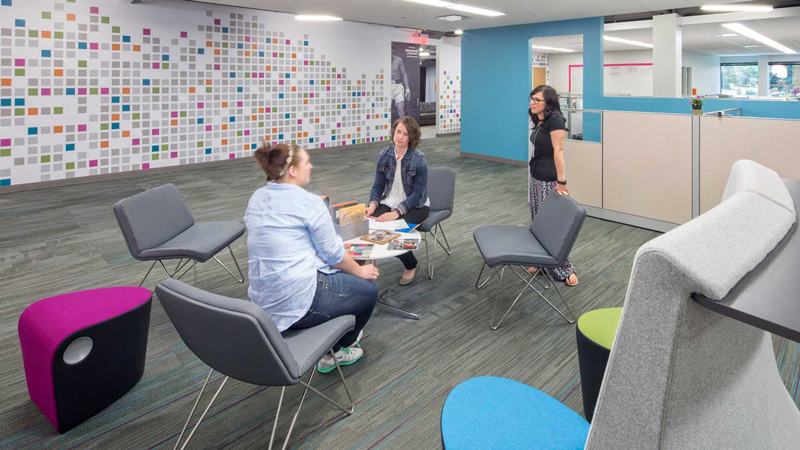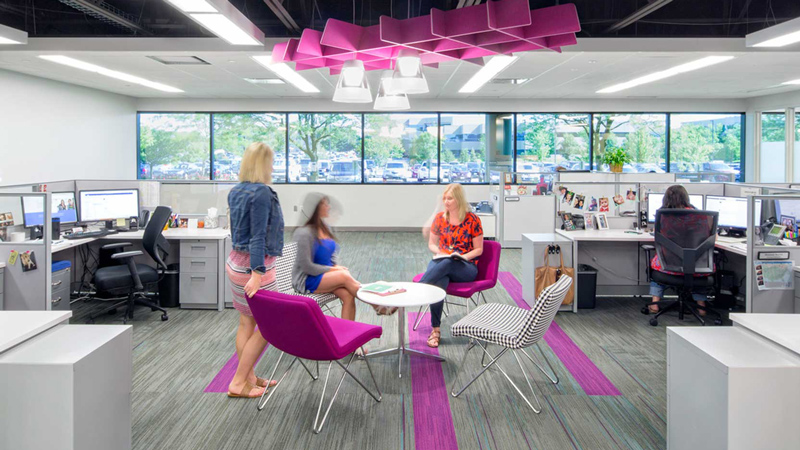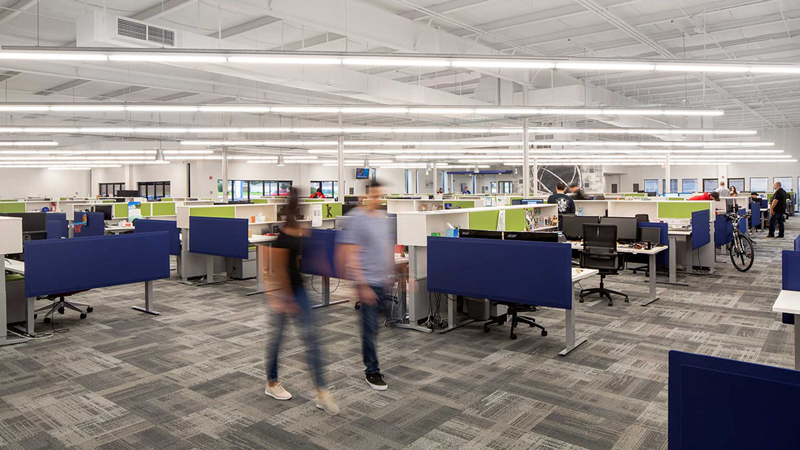Recent Articles
Five ways to design your workplace for a multigenerational workforce
by Emily Osborn, Interior Designer
When my parents were the age I am now (23), workplace design norms included closed-off groupings of cubicles, formalized conference spaces and few, if any, collaboration spaces. From a design standpoint, these norms make inefficient use of space. For example, until recently interior space allocations per individual were typically around 225 square feet of personal space. Unless an employee requires a large amount of storage, modern personal desking need not exceed 40-70 square feet, if the workplace is designed holistically and in a way that supports a multigenerational perspective.
Below are some strategies for bringing design harmony to your multigenerational workplace while maximizing available square footage.
- Embrace Transparency
Many Gen Z and Millennial workers feel more confident working for a company that embraces transparency. We want to know what is going on around us in our workplace because it helps us understand our role in the company. Transparency can be improved through the interior design of a workplace and through company culture. A company-wide gathering space where everyone can celebrate together can be a great investment. Additionally, breaking down visual and physical barriers between company leadership and employees can evoke transparency. This can be done by centrally locating managers’ offices and using glass to divide space, thereby making managers more accessible to employees, or by removing private offices altogether.
- Offer a Spectrum of Private and Public Work Spaces
Many Baby Boomer and Gen X workers are accustomed to private work spaces for heads-down work and brief meetings, while Millennial and Gen Z workers tend to prefer informal group settings. The addition of hoteling spaces is one way to appeal to all generations. Hoteling allows companies to retain a limited number of private office spaces and make them reservable by individuals should they need them for heads-down private work sessions, personal phone calls or that final review session before a 5 p.m. deadline. Offering a range of sizes of hoteling offices increases their versatility. Larger spaces can double as small meeting spaces for two to six people. Using glass for visual transparency can maintain acoustic privacy, while glass treatment such as interior drapery or translucent window film allow for visual privacy when needed.
- Create Centrally Located, Flexible Collaboration Spaces
Placing collaboration spaces near high-traffic or working areas is a great way to make sure they get used by all types of workers, especially if collaborative spaces are enabled with technology, such as large monitors to display content and video conferencing. Another way to invite usage is by offering a variety of seating options and work surfaces within the collaboration spaces.
- Minimize Formal Conference Rooms and Replace Them with Multipurpose Spaces
Because employees of different generations prefer to work in different ways, providing variety in meeting spaces ensures all employees are working the way that they feel is the most comfortable and productive. Companies can achieve variety by providing conference spaces that can be easily reconfigured for different purposes (e.g., training, demonstrations and group work sessions). Allowing spaces to serve a variety of needs reduces the amount of real estate devoted to a single type of meeting and increases efficiency of overall square footage. Likewise, a variety of meeting styles and seating postures can make for a more energetic and engaging work environment.
- Brand through Design
Subtle and not-so-subtle color patterns and logos can be an inexpensive but effective way to retain cohesive branding throughout the workplace for employees from every generation and background. Aesthetically pleasing graphics that visually assist with wayfinding are another small but worthwhile investment that helps keep everyone moving in the same direction, together.
Generational diversity makes for a vibrant workplace, and when the time comes to expand, move or renovate your office, it’s worth considering the benefits of aligning your space with that diversity. It can increase flexibility and productivity, allowing you to capture greater value per square foot.

About the Author
Emily is an interior designer in LEO A DALY’s Omaha studio and a 2018 graduate of the University of Nebraska-Lincoln. She is passionate about understanding her clients, keeping up to date on current trends and innovations in the design world and helping to program and tailor custom concepts with teams of diversely skilled people. Emily can be reached at egosborn@leoadaly.com or 402.390.4228.




